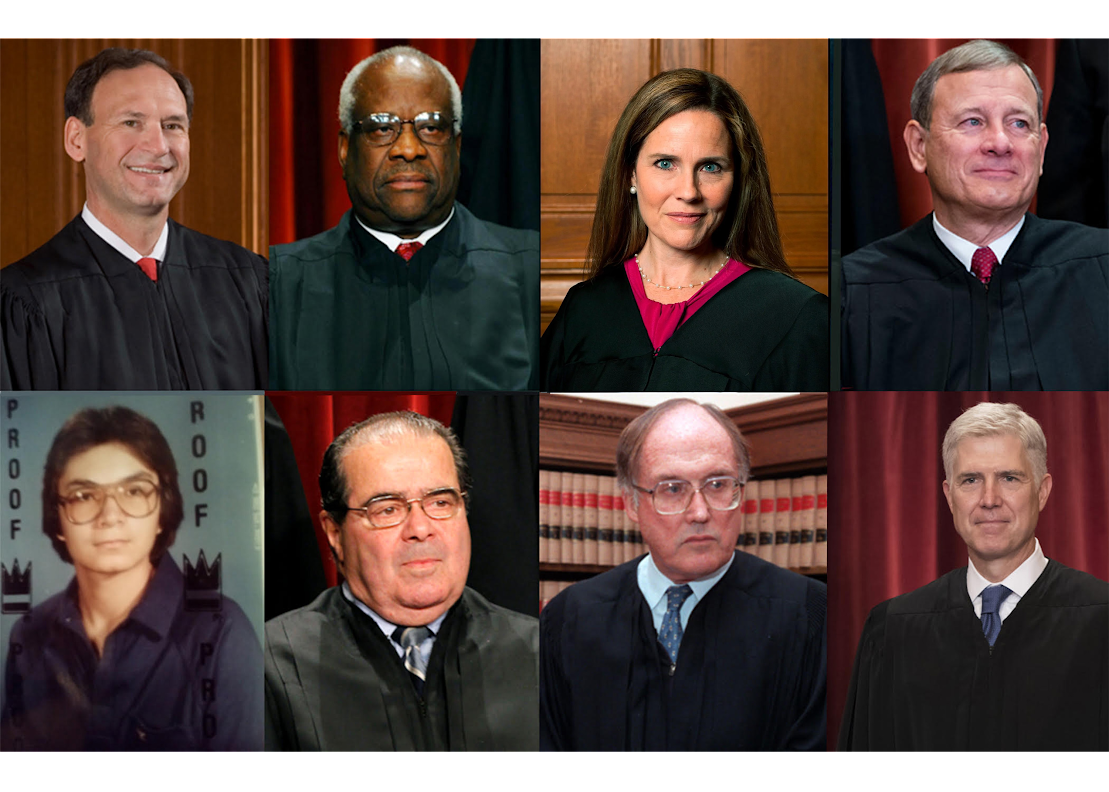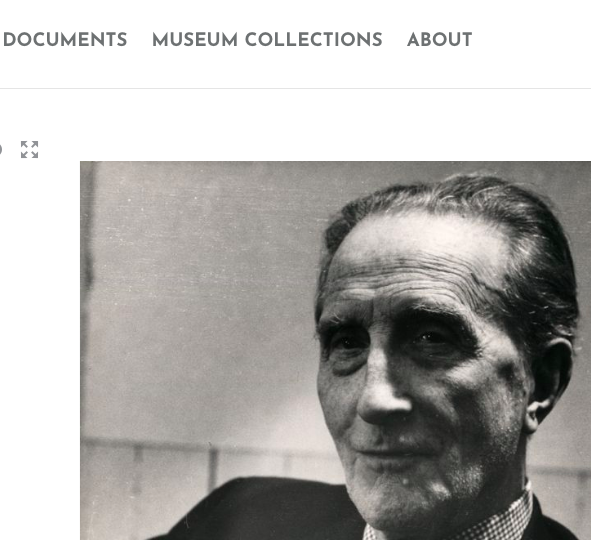The National Gallery London is about to open its worst exhibition ever. The pictures are deplorable: incompetent copies, botched restorations, outright fakes. The most painful thing for the gallery is that it bought most of them genuinely believing they were masterpieces. A fascinating new show examines the controversial question of fakery, forgeries and mistaken identities in art. The exhibition runs from June 30th to September 12th. Via The Guardian.
Will textualism save our copyright planet? Warhol Fdn v. Lynn Goldsmith headed to SCOTUS
Images of Goldsmith and Warhol at issue. The U.S. Supreme Court will review a ruling that an Andy Warhol print infringed a copyrighted photograph taken by photographer, Lynn Goldsmith, of the late musician, Prince. We certainly hope--as much as one can hope for anything these days--that SCOTUS cleans up the wasteland that has become of "fair use" interpretation. One would think, and hope I suppose, that with many of the sitting justices adhering to textualism, they will fully jettison the nonsensical "transformativeness" test that has plagued us like a really bad case of Covid since the mid-1990s. Docs here, via ...


Podcast: Stephanie Drawdy and Sergio Munoz Sarmiento on All Things Art and Law
Ahh...Youth! Sergio Munoz Sarmiento. (2015 - ongoing), C-Print. © and TM Sergio Muñoz Sarmiento. All rights reserved. I had a lovely conversation with fellow lawyer and artist, Stephanie Drawdy, on the NFT craze, pets, art law, and the origins of The Art & Law Program. You can listen to the Podcast here. Hope you enjoy!


Marcel Duchamp archives now online, free of charge
The Philadelphia Museum of Art, the Centre Pompidou, and the Association Marcel Duchamp have digitized their vast archives of material on the Dadaist and placed it online, where it is free to all. Enjoy!


The Art & Law Coloring Book
If you have kids at home and want them to do something fun and educational, try the Art & Law Coloring Book, an ongoing project by The Art & Law Program. Really a great collection of drawings by great artists, including: Emma Jane Bloomfield Damien Davis Molly Dilworth João Enxuto Soda Jerk Clare Kambhu Alexandra Lerman Erica Love Douglas Melini Sergio Muñoz Sarmiento Melinda Shades Elisabeth Smolarz Gabriel Sosa Alfred Steiner Valerie Suter Happy coloring!


What are NFTs and what does it mean to own one?
If you're confused as to what the hell NFTs are, particularly art NFTs, here's a new article by Alfred Steiner that pretty much walks you through and safely out of the NFT hell. In his article, Steiner explains what NFTs are and what it means to own one. He also discusses why that meaning of ownership—which may appear novel to many—isn’t new at all when considered against the backdrop of the market for conceptual art. Steiner concludes with some observations about how NFTs may be good and bad for the art industry.


The 17th-century painting The Taking of Christ by Italian Renaissance artist Michelangelo Caravaggio, stolen from a Ukrainian museum in 2008, has been found in Berlin. The suspects arrested in the case had reportedly brought the work to Berlin in the hope of selling it to a German collector. Experts estimate that the painting is worth as much as several tens of million euros. Via Ria Novosti.
Six artists and writers, Michael Cataldi, John Houck, David Kelley, Hans Kuzmich, Jens Maier-Rothe, and Jeannine Tang, are investigating the use and development of public space. Through their documentary, Parallel Lines, the artists focus on New York City’s recent development of The High Line, and ask pertinent and timely questions.
How does public space get imagined, funded, inhabited, used and produced? Who defines public space, and for what ends? How are populations distributed for access to space, quality of life, housing and survival? How do zoning and property development produce relations of privacy and publicness? What are the visual, architectural and environmental methods that render space public? How do we identify with each other as “the public”, and what feelings and emotions contour these experiences? How can we imagine and create the public space we desire?
In their own words, the artists respond:
Parallel Lines is a documentary and a demand for the public space we need, told through lives, histories and developments parallel to the High Line, a park on New York City’s West Side. The High Line opened to the public in June 2009, and has become a frequently celebrated example of public space for community, culture, innovative design, and urban renewal. As the High Line becomes a model public space, we critically investigate its aesthetic, economic, legal, political, architectural and urban development processes and the history of its surrounding neighborhoods[.]
Check out their website and keep up with the project development here. (Disclosure: I was interviewed for this documentary and appear in the video available on their website.)
If you’re interested in air rights and the use and contestation of air space, you may find this of interest. Interaction designer Nelly Ben Hayoun and geography researcher Dr Alison J Williams teamed up for Airspace Activism, a project that investigates the geographies of UK military airspaces which are used by air forces to train and prepare for combat situations.
During the early years of aviation aircraft flew at a relatively low altitude. However, laws existed that gave land-owners ownership of the entirety of the vertical space above the footprint of their house, including the air. This led to a myriad of problems for aviators and landowners who became locked in battle over payment for access to these spaces.
Here’s a good interview with the artists, including tactics on creating disruptive “white noise.”
Armed bandits made off with a 14th or 15th century Chinese painting worth $150,000 from an art dealership in Yaohan Center Mall in Richmond, British Columbia, last Saturday afternoon. The painting was a Ming Dynasty antique by painter Lan Ying. The thieves also made off with two jade Buddha statues of unknown value and a piece of Chinese caligraphy art. Via The Province.
The online virtual environment Second Life has taken down an art exhibit because its community guidelines do not allow nudity unless it is confined to a space that has a “mature” or “adult” rating. According to the blog, Bloggin Censorship, filmmaker Peter Greenaway hurled strong criticism against Second Life: “Like any self-respecting artist of course I am against gratuitous exploitation that demeans and insults intelligence and sensibilities but by your blanket censorship you are now doing both those things – insulting artistic intelligence and demeaning sensibility.”
Alfred Steiner has just created a new art work consisting solely of an agreement. The art work is up for auction on eBay, with one bid coming in at a high .01 cent. Note that the agreement-as-artwork carries with it a 10% right of resale, which gives Steiner that percentage in “royalties” if and when the work is resold. The contract as artwork is a current hot topic, but rarely effective and enforceable. Seth Siegelaub’s, The Artist’s Reserved Rights Transfer and Sale Agreement comes to mind, and one that has functionality as well as art historical substance. Oh, and it also has a resale right. Are artists finally catching up to musicians?
This is an auction for an artwork. The artwork is not a painting, drawing or sculpture–it is an agreement. The full text of the agreement … can also be downloaded in Microsoft WORD form at http://www.alfredsteiner.com/Agreement1.doc. You should read the agreement itself, but in brief, I describe the nature of the artwork as agreement, provide for an Initial Purchase Price (which will be the winning bid for this auction), promise that I won’t create a functionally equivalent artwork, and describe how the Purchaser (that is, the winning bidder of this auction) may transfer the work (which requires a payment of 10% of any sales price back to me).
His project, Agreement as Artwork, can be read and bid on here. If you’d like to read Steiner’s agreement now, see below.
Clancco, Clancco: The Source for Art & Law, Clancco.com, and Art & Law are trademarks owned by Sergio Muñoz Sarmiento. The views expressed on this site are those of Sergio Muñoz Sarmiento and of the artists and writers who submit to Clancco.com. They are not the views of any other organization, legal or otherwise. All content contained on or made available through Clancco.com is not intended to and does not constitute legal advice and no attorney-client relationship is formed, nor is anything submitted to Clancco.com treated as confidential.
Website Terms of Use, Privacy, and Applicable Law.



